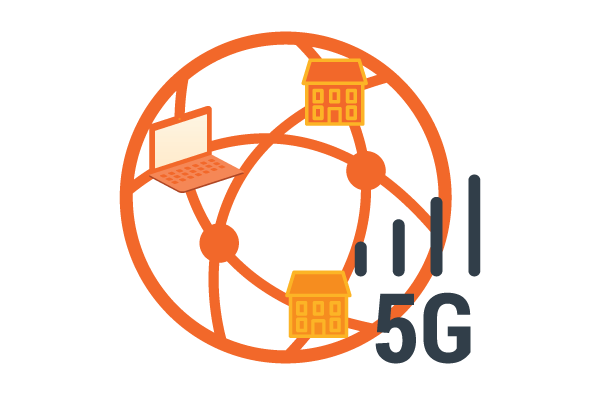Buzz Haven: Your Daily Dose of Trending News
Stay updated with the latest buzz in news, trends, and insights.
5G and the Race for Lightning Fast Connections
Discover the thrilling world of 5G technology and how it's shaping the future of lightning-fast connections! Dive in now!
Understanding 5G: The Technology Behind Lightning Fast Connections
5G technology represents the fifth generation of mobile networks, designed to significantly improve data transfer speeds, reduce latency, and enhance overall connectivity. Unlike its predecessor, 4G, which primarily focused on increasing bandwidth for streaming and downloads, 5G introduces a complex architecture that supports a broader range of applications. This includes not just mobile internet access but also advanced technologies such as the Internet of Things (IoT), autonomous vehicles, and smart city infrastructures. The success of 5G depends on a combination of technologies, including millimeter waves, small cell networks, and massive MIMO (Multiple Input Multiple Output) systems.
At the core of 5G is the utilization of millimeter wave frequencies that allow for higher data throughput and improved connection stability. These frequencies can transmit large amounts of data quickly but have a shorter range, which is why 5G networks rely on a dense infrastructure of small cells strategically placed throughout urban areas. Additionally, 5G employs advanced techniques such as beamforming, which directs signals toward specific users rather than broadcasting in all directions. This not only enhances speed but also minimizes interference, making 5G a transformative technology that is set to revolutionize how we connect and communicate.

The Impact of 5G on Everyday Life: What You Need to Know
The rollout of 5G technology is set to revolutionize the way we interact with the world around us. With its enhanced speed and reduced latency, everyday activities such as streaming high-definition videos, online gaming, and video conferencing are expected to become smoother than ever before. This connectivity will enable a new wave of smart devices that can communicate seamlessly, potentially leading to advancements in smart homes and IoT (Internet of Things). Imagine a world where your refrigerator can automatically reorder groceries when supplies run low, or your thermostat adjusts the temperature based on your preferences—all powered by the unparalleled capabilities of 5G.
Moreover, the implications of 5G extend beyond personal conveniences. In sectors such as healthcare, telemedicine will gain momentum, allowing for real-time consultations and remote surgeries with minimal latency. This means that patients in rural areas can receive expert medical advice without the need for travel. Additionally, industries like manufacturing and transportation will benefit from the speed and reliability of 5G, paving the way for innovations like autonomous vehicles and automated production lines. As 5G continues to roll out, understanding its impact on our daily lives will be crucial for adapting to this technological evolution.
Is 5G Safe? Debunking Myths and Addressing Concerns
The rollout of 5G technology has sparked a flurry of discussions and debates regarding its safety. Many myths have emerged, leading to widespread concern among the public. One of the most common misconceptions is that 5G increases the risk of cancer due to higher frequencies. However, studies conducted by various health organizations, including the World Health Organization (WHO), indicate that there is no conclusive evidence linking 5G to adverse health effects, reaffirming that the levels of exposure are below the limits deemed safe.
Another prevalent concern is the claim that 5G can weaken the immune system, making individuals more susceptible to illnesses. This fear has been amplified in the context of the ongoing global health crises, leading to misinformation circulating on social media. Nevertheless, experts emphasize that there is currently no scientific basis for these worries. Instead, they encourage the public to rely on credible sources of information and to understand that the technology itself poses no greater risk than previous generations of mobile networks.